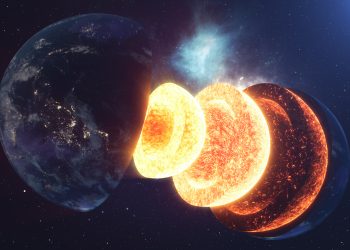Hurricanes, also known as tropical cyclones, are one of nature’s most powerful forces. These swirling storms originate over warm tropical or subtropical waters and can cause widespread devastation. But what exactly is a hurricane, and how does it form?
At its core, a hurricane is a rotating system of low pressure characterized by organized thunderstorms but no distinct boundaries, known as fronts. When surface winds in such a system stay below 39 miles per hour (mph), it’s classified as a tropical depression. Once the winds exceed 39 mph, the storm advances to a tropical storm. The most severe stage is reached when winds sustain speeds of 74 mph or more, at which point it is officially termed a hurricane.
The Saffir-Simpson Hurricane Wind Scale provides a system for categorizing hurricanes based on the intensity of their maximum sustained winds. This scale ranges from Category 1 to Category 5, with each increasing level signifying a greater threat to life and property. A Category 5 hurricane, for instance, can cause catastrophic damage with winds exceeding 157 mph.
Lightning flashes within Hurricane Helene’s eye wall as robust convection fires.
Helene continues to strengthen as it approaches Florida. pic.twitter.com/XOhTY3JOSU
— CIRA (@CIRA_CSU) September 26, 2024
;
The Atlantic basin
Hurricanes primarily form in the Atlantic basin, which includes vast regions like the Atlantic Ocean, Caribbean Sea, and Gulf of Mexico. They can also develop in the eastern and, less commonly, central North Pacific Oceans. These storms are named using a list that rotates every six years, managed by the World Meteorological Organization.
Although hurricane season typically runs from June 1 to November 30, these storms have been known to occur outside of this period. On average, about 12 hurricanes develop in the Atlantic basin each year. The National Oceanic and Atmospheric Administration (NOAA) plays a key role in forecasting and tracking hurricanes, helping to prepare communities in the path of these destructive forces.
Hurricane Helene is now a powerful, major hurricane. pic.twitter.com/sUP6K2kbZw
— CIRA (@CIRA_CSU) September 26, 2024
NOAA is a global leader in hurricane research, striving to uncover the complexities behind these storms. By deepening our understanding of how hurricanes form and behave, researchers aim to protect people, property, commerce, and even natural ecosystems from their devastating effects.
Very warm waters await Hurricane Helene in the Gulf of Mexico as seen in this satellite imagery showing the sea surface temperatures of the body of water.
Helene is forecast intensify into a major hurricane before making landfall in the Florida panhandle tomorrow evening. pic.twitter.com/Ryd6bnK8iQ
— CIRA (@CIRA_CSU) September 25, 2024
Hurricanes have a profound impact on both local and global scales. The destructive winds, torrential rains, and storm surges can lead to loss of life, massive property damage, and long-term disruptions to economies. But beyond the immediate danger, hurricanes also shape our preparedness strategies. Communities in hurricane-prone regions invest in stronger infrastructure, emergency planning, and efficient communication systems to minimize damage.
Hurricanes are one of the most extreme weather events many people will ever witness. What was your experience like? How did you prepare, and what did you learn from it?
Join the Conversation!
Have something to share or discuss? Connect with us on Facebook and join like-minded explorers in our Telegram group. For the latest discoveries and insights, make sure to follow us on Google News. Passionate about history and knowledge? Be part of our exclusive community by visiting the Ancient Library’s Telegram group.











